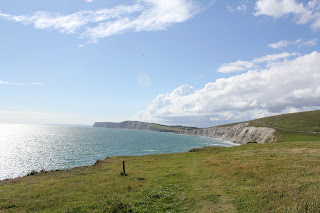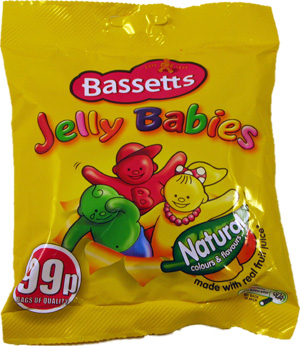In 2012, I made the transition from trails to tarmac for racing; signing for the Wightlink Race Team. I had a good 2012 Season; achieving my Second Category licence, with a fair few race wins.
This blog is aimed at people thinking of doing the same; with ideas on how to get onto the circuit, be successful and stay safe. There's no substitute for getting out and riding your bike, but there are ways to make those miles count, and help towards a race win.
Training
This is where it all begins: right here...right now. If you are looking to start racing in the 2013 season, your training should be starting as soon as possible. At this time of the year, the key is to work on base miles; especially if you are new to cycling. It is important to develop a good aerobic base that you can use during the racing season; the best way to do this is long rides from November to January: 2-3hrs should be your aim if you are a beginner. Focus on steady riding with some efforts on the hills thrown in, to make it a bit more exciting. This kind of training is often best done with friends or a club; it helps to break the monotony. The most important thing at this stage is to get out on the bike and enjoy it, only really pushing yourself hard every now and again. It will help to lose a bit of weight and get you fit for the start of the year.
Come January, the more specific training can start. If you have raced before, you may know what your strengths are, for example I am certainly not a sprinter, far more a climber; my training come the New Year will focus on power, and building a better sprint; as well as interval training to improve my threshold. If you are relatively new to cycling, then sprinting is a good thing to practise; a 4th Cat road race will almost certainly end in a sprint (for reasons explained later), and so doing three or four 'sign sprints' in your ride will help to build power that can be utilised in that finish line sprint for glory.
The New Year also signals a time to start picking up the pace; a 4th Cat. race will often average over 21mph; don't be intimidated by this, you will be surprised how easy it is when you are sat in the bunch. However, you do need to have the ability to ride at or above that rate for a reasonably sustained period of a few minutes; just in case you drop off the back of the group, or find yourself on the front. The best way to build up to this is doing intervals of speeds around 21-22mph, and then gradually progressing the length of these intervals, or lowering the rest period. It will take time, but don't worry you'll be able to do it before the season starts. You should be looking to do around 7 hours a week minimum training.Preparation
 Come March, the British Cycling Racing calendar will have been released for a month or so, and you will be able to select your first target race. Most 4th Cat races are 'Closed Circuit', so you don't have to worry about playing chicken with cars, at the same time as racing in the bunch. Pick a race on a course close to home, that is reasonably flat, open and safe; courses on airfields and race-tracks are ideal. (Often it pays to enter races in advance, so that you are assured a space; but if you would prefer to wait until the day because of concerns about weather etc. then this is normally possible, and you can "enter on the line"). Don't forget to sort out your British Cycling membership and Silver Race License (at least) in time, sometimes they take a while to come through.
Come March, the British Cycling Racing calendar will have been released for a month or so, and you will be able to select your first target race. Most 4th Cat races are 'Closed Circuit', so you don't have to worry about playing chicken with cars, at the same time as racing in the bunch. Pick a race on a course close to home, that is reasonably flat, open and safe; courses on airfields and race-tracks are ideal. (Often it pays to enter races in advance, so that you are assured a space; but if you would prefer to wait until the day because of concerns about weather etc. then this is normally possible, and you can "enter on the line"). Don't forget to sort out your British Cycling membership and Silver Race License (at least) in time, sometimes they take a while to come through.
If you have kept up your training, and not eaten too many pies over the winter, then you should begin to feel ready to race by March; with your intervals getting longer, and your speed rising. Keep training hard until a week before the event. Then cut out all the hard sessions; ride your bike, but don't over-do it. Let your body ensure it has fully repaired itself ready for the race. In those hours that you might have been training, it is now time to look at your kit...
Kit
Clearly the most important thing is your bike. Ensure that it is in full working order; chain cleaned, brakes working, tyres in good condition, gears indexed etc. If you are not a dab hand at bike maintenance, then take it down to your local bike shop and let them have a look over it; the last thing you want after all that training, is a mechanical failure during the race. Talk to your local mechanic about any concerns you may have, such as tyre pressure, braking and correct gearing; hopefully they might know the specific circuit that you are racing on, and will have an idea about how to set your bike up perfectly for the race.
The rest of the kit that you need can be found in my previous blog post: Race Day Kit List
Nutrition
Nutrition is an integral part of your preparation; in both training and racing.

When you are training, it is most important to make sure that you recover well; have a look at my blog post
Eating For Recovery, for a few ideas about meals that can help you with this. Recovering well will enable you to train harder, and for longer.
In the week leading up to the race pay particular attention to your diet; try to avoid foods that might upset your system, and focus on a good balance of fresh fruit to keep your immune system going strong.
The night before the event have a large carbohydrate rich meal; for example chicken and pasta, avoid spicy food and stodgy puddings. If you do want a pudding check out these:
Cycling Puddings.

On the morning of the race have a big breakfast, ideally three hours before your race start. I am a huge fan of porridge; but if you're not, try to stick to an oat based cereal, with reduced fat milk, certainly no cooked breakfasts - you will probably only see it later if you do!
As you make your way to the event keep eating gradual amounts to keep your blood sugar levels high; something like a
High Energy Flapjack, or an
Energy Bar every hour. Now is not the time to be trying out new energy bars; test some in training to see what you like and what agrees with your stomach.

An hour before the event have one last energy bar, and then convert to sugary foods such as a banana or Jelly Babies. Some other instant energy hit foods can be found on the blog post
Alternative Energy Foods. These will help to get your blood sugar up, and will avoid heavy foods sitting in your stomach just before the race.
Fifteen minutes before the race have an energy gel. Then during the race aim to keep having gels every 30 minutes if you can. Some races will be short enough that you can make do with energy drink; but anything longer than 45 minutes, and you need to be thinking about eating something as well.
Longer races require more nutritional preparation; think about eating an energy bar every 20km, up to the last 40km; and then switch to the routine of gels every 30 minutes. Race nutrition is very personal though, some will find it very hard to eat, others easy. Find what works for you.
Hydration is also very important. This should start the evening before an event; keep drinking plenty of water and ensure your urine is clear. On the morning of the race, I usually have one large coffee with my breakfast, and then continue to sip on electrolyte drink on the way to the race. An hour before the race start, convert to energy drinks, again to raise your blood sugar; if you are properly hydrated you will know...just don't forget to make that final toilet trip before the race starts.
Aim for one 500ml bottle of isotonic energy drink every 45 minutes throughout the race, and increase this to 750ml if it is very hot.
After the race... recover well. Again think about my advice in the blog post
Eating For Recovery.
Riding In A Bunch
Now for some advice on riding...When riding in any bunch; be it a club run, or a road race, there is a certain etiquette to follow. I have blogged about this before in
Hints and Tips: Riding in Groups of Peletons. Make sure you know the 'rules' and stick by them!

When it comes to a race situation things get a little more heated...but the key is not to panic. The best thing is to do your training with a club, or if you can a team; that way you can learn to ride in close proximity to other riders. Practise rotating riders at the front doing 'through-and-off', and getting the feel of the different speeds and effort required to ride confidently and safely in a group.
Try to sit an equal distance off the wheel in front; use your brakes to regulate, and use a low gear to ensure a smooth riding style with a high cadence, so that you can respond to changes in pace quickly and efficiently.
The key though, is really just to relax; don't tense up and make drastic movements like sudden braking or swerving. Don't overlap wheels and hold your line! If you do those, you will find yourself riding comfortably in the bunch before too long at all.
Tactics
Tactics are difficult, every circuit is different, every race is different; weather conditions change, riders change...there are too many variables to think about to come up with a one-formula-fits-all case. The best thing to do is go out there and learn what works and what doesn't work. It won't be long before you are 'reading the race'; looking at the wind conditions, the road surface, the faces of your rivals and the strength of the breaks...once you start being able to do this, you will be in a good position to get the results you want. But don't worry, it will take time.
One thing that I would say, is that most 4th Cat. races do end in a sprint. Mainly because people will not work with you in a break...if you want to get an idea, have a read of race reports like this from my first ever race:
4th Cat. Frustration and a Fifth Place Finish. When people are new to racing, the focus is on the individual, and you will find it very hard to find someone that will selflessly work with you in a break. There are of course exceptions such as this race:
Victory! With a Lot of 'Shut Up Legs!'; but in the main, you should expect the race to come down to a bunch sprint. Therefore it is all about positioning yourself well going into the last 500 meters, and finding the wheels to watch, and when to let the hammer drop. This again will come with practice, and changes depending on the circuit...keep working at it, and it will come...tactics can't really be taught in a blogpost, they are learnt on the road.
Reflection
On finishing your first race, take time to reflect on how it has gone. Some will finish badly; perhaps you couldn't hold onto the wheels and got dropped from the pack, perhaps you were the victim of a mechanical or a crash, or perhaps you just didn't quite get the result that you were hoping for. Alternatively...perhaps you won!
Either way, take time to sit and reflect on it (preferably with a coffee and cake). Always try to take something positive away from it - that might be that you need to go away and get stronger, improve your equipment, or practise more bunch riding.
Your first race is a milestone; you need to build on it to move forward, and avoid getting disheartened by initial hurdles.
Phew! That was a long one. I hope that you've found it useful and that you are inspired and reassured enough to give a bit of road racing a go. If you have any further questions, feel free to post them in the comments section below.














































